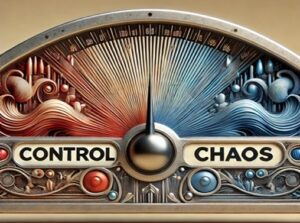Author Archive: Thomas Rich
Honey Badgers Don’t Care. Why Should You?
 You really don’t have to care about everything.
You really don’t have to care about everything.
If you have an emotional reaction to all you see and hear, you’re going to have a hard life. Truth is, it’s impossible to care about everything, and a bad idea to try. Learn detachment. It’s OK not to share other people’s passions or concerns. Back in 2011 people became obsessed with honey badgers, mainly because they clearly don’t care about anything. Well, you too can be like a honey badger and not give a ****.
When I conduct qualitative research, I don’t just focus on what people think about a topic, but also on their depth of feeling. How much an individual cares about something tells a lot about their decisions.
Assessing strength of commitment is important, because this isn’t a binary thing. It’s possible to calibrate how much you care. There’s a continuum of engagement ranging from “I’m interested in this issue and will pay attention to it” through “I care about this and will devote time and energy to it,” all the way to “I identify with this issue – it means everything to me.”
Identification is where things become dicey. On one hand, identifying with an issue – and seeing everything through that lens – can help you be an effective agent of change. On the other hand, it’s risky. How you define yourself is a crucial question and can powerfully influence your state of mind. When you center your identity around an issue, you become vulnerable to the ups and downs associated with it. This may have implications for your mental health.
While completely throwing yourself into something might seem necessary, sometimes detaching can actually be a better way to care – some distance might facilitate better thinking and help identify solutions.
If you find yourself struggling to detach – and we all do sometimes – here are a few tips that might help:
Avoid glorifying emotions. It’s easy to wallow in outrage – I wrote about this a few years ago. But strong feelings don’t absolve you from responsibility to seek solutions. Focus instead on facts and reason.
Identify what you can and cannot control. Realizing something is beyond your influence may make it easier to disengage.
Reflect. This might involve things like mindfulness, meditation or journaling. These can help you be aware of something without overly identifying with it.
Be careful with the words that make up your internal dialogue. For instance, instead of thinking “this needs to happen,” replace that statement with “whatever occurs, I’ll roll with it.”
Visualize. Imagine taking an issue, placing it in a box, closing the box, putting that box in a drawer, then closing the drawer.
Remember, detaching doesn’t mean withdrawing completely, it just means engaging wisely. For the sake of your own mental health, be selective regarding what you care about, and how much you care.
Thanks to my BFF Michelle Ögren Jefferys for the honey badger metaphor.
The Lesson That Lasts
 You learn what you love.
You learn what you love.
I once heard a statistician observe that the most important teacher in his life wasn’t the one who taught him the most math, but the one who taught him to love math. This made me realize that, if you want to teach people something in a way that will stick, teach them to love it. Most important skills aren’t taught to us. Rather, we self-teach them. Take riding a bicycle. Nobody really teaches you this, they just put you in a position to work it out on your own.
This certainly applies to my field of qualitative research. I can’t teach you how to do what I do. Sure, I can explain basic principles and skills. I can also show you how I do certain things, and I can describe how others do them. But ultimately, this is something you figure out for yourself, and that takes time and effort. If you truly love something, you’ll be willing to invest the years (or even decades) of work required to master it, and you’ll be able to weather the disappointments and failures you will inevitably encounter along the way.
So, this brings up two important questions:
1. How do you learn to love something?
2. How to you teach somebody to love something?
I’ve found there are two keys to learning to love something:
Begin with curiosity. If you’re eager to know about something, that’s a great place to start. But beware letting curiosity morph into pressure. That probably won’t help you learn to love something.
Take it slowly and give it time. Love at first sight might be common in movies, but it’s rare in real life. Allow your enthusiasm for something to grow and evolve over time. Sometimes love is a thing that builds inside of us, not something we find.
As for how to teach somebody else to love something, in addition to the above principles, there are a couple more things to remember:
Start with why, not how. Share your reasons for loving something, and don’t be shy about modeling your feelings and practices.
Let them struggle. Allow them to work through their suffering by themselves. Sometimes, we learn to love something after we’ve wrestled with it and made it our own. This goes back to the idea that most important skills are self-taught. So, don’t think of yourself as a teacher, but as a guide.
As St. Thomas Aquinas, the 13th century Dominican priest and philosopher, once wrote, “The things that we love tell us what we are.” Learning to love something yourself, and teaching others to love things as well, are valuable skills that will teach you a lot about you. Because, when you come to love something, it becomes a part of you.
If Only Life Had an Undo Button
 You can’t change the past.
You can’t change the past.
I sometimes joke with my wife about how great it is that so many devices and apps have a mute button, and wouldn’t it be nice if certain people had that button. She generally responds that, if I’d like to marry my smartphone, I should feel free to do so. I also make extensive use of the undo function in the apps I work with, and have often wished life had that feature as well.
But it doesn’t. Newsflash – we can’t change the past, much as we would like to. As a qualitative researcher, I have often found the ‘time machine question’ to be useful. Asking participants what they would do if they could turn back time brings up all sorts of interesting topics: decision-making, regrets, fears and hopes to name a few. But, while it’s worthwhile to dwell on these questions in the context of qualitative research, it’s not a great way to live your life.
Thinking about the past is entirely human. It can be productive, particularly if your intention is to learn and improve. (A couple of years ago I wrote a post on learning from past mistakes.) It’s no accident that so much popular culture centers around the theme of time travel and changing the past. Just ask Marty McFly.
But, when rehashing the past, it’s easy to lapse into regret and recrimination. Psychotherapists understand that discussing regrets and past mistakes with patients can be risky, with the possibility of ‘retraumatizing’ patients if the memories being discussed are particularly distressing. This is why the ancient stoic philosophers exhorted their followers to let go of their disappointments and focus on the present.
So, what are some keys to looking at the past productively?
Own your failures, maybe even celebrate them. I’ve always believed that, if you never experience failure, you’re not trying hard enough.
Don’t conflate decisions with outcomes. Remember that a good decision doesn’t guarantee a good result. What’s more, sometimes you get lucky and a bad decision works out anyway. If you took a smart risk, give yourself credit for that, regardless of the results.
Be honest about what could, and could not, have been foreseen. We must expect the unexpected. Think about contingency planning – did you make sufficient allowances for the unpredictable?
Focus on what you can learn, rather than how you messed up. The point of looking back is to learn and grow, not to beat yourself up.
Know when it’s time to stop analyzing and move on. There comes a point when reflection must give way to action.
I’m not saying that any of this is easy, but it is possible. And the more you do this, the better you’ll get at it.
When you continually rehash, or even obsess over, the past, you’re not doing anything productive, you’re just wasting time and imprisoning yourself in a cycle of regret and self-blame. So, make peace with the past. Make peace with your mistakes. They have made you who and what you are today.
Control What You Can. Forget the Rest.
 Happy New Year to all! I’m guessing that many of you have made some New Year’s resolutions.
Happy New Year to all! I’m guessing that many of you have made some New Year’s resolutions.
As for me, I have resolved for the new year to focus, to the greatest extent possible, on things I can actually control. I also plan to devote as little attention as I can to things that are beyond my control. This is hardly a new idea – the principle goes back at least as far as ancient Greece. As the stoic philosopher Epictetus once wrote, “Some things are up to us, and some things are not.” He also pointed out that trying to control the uncontrollable is inconsistent with living in harmony alongside nature.
While focusing on what you can control sounds great, it’s more easily said than done. But I’m going to give it my best shot. This resolution has gotten me thinking about what is truly within my control, and I’ve come to realize that this is more complicated than I had originally thought.
For one thing, in my field of qualitative research, it’s well accepted that it is unwise to exert too much control over research conversations and interviews. Only by ceding control can we allow conversations to go in unexpected directions and yield creativity and insight that would otherwise be inaccessible. So, even if you can control something, maybe you shouldn’t.
There are also implications for marketing strategy. For instance, you can’t control how consumers behave and perceive your brand. However, you usually can control the brand experience, which can provide some indirect control over behaviors and perceptions. This illustrates the principle elucidated by the Roman philosopher Seneca that, while we can control our own actions and decisions, we generally can’t control outcomes.
So, what makes the question of what you can control so complex? Here are some factors that I think contribute to this:
-
Control is not a binary thing; it’s one end of a continuum (the other end being chaos). While some elements of a situation are clearly controllable, and others clearly aren’t, many fall into a gray area. You might not be able to ‘control’ something, but you can influence it. This is particularly true in collaborative situations, when success depends on both individual and collective effort.
-
Overly stressing control can hinder creativity. Making a situation too controlled makes it less likely that the unexpected will happen. Remember – the world is a beautifully messy place; my last newsletter touches on the idea of embracing the uncontrollable.
-
Emotions can get in the way – ceding control might not feel good.
-
So can moral values – giving up control might even feel wrong.
Let’s return to my New Year’s resolution. While there are countless ‘controllable’ things to choose from, I’ve decided to focus on just three in 2025:
-
How much time I devote to the people I care about.
-
My willingness to change my opinion about something.
-
How much effort I make to discover new ideas and build new skills.

